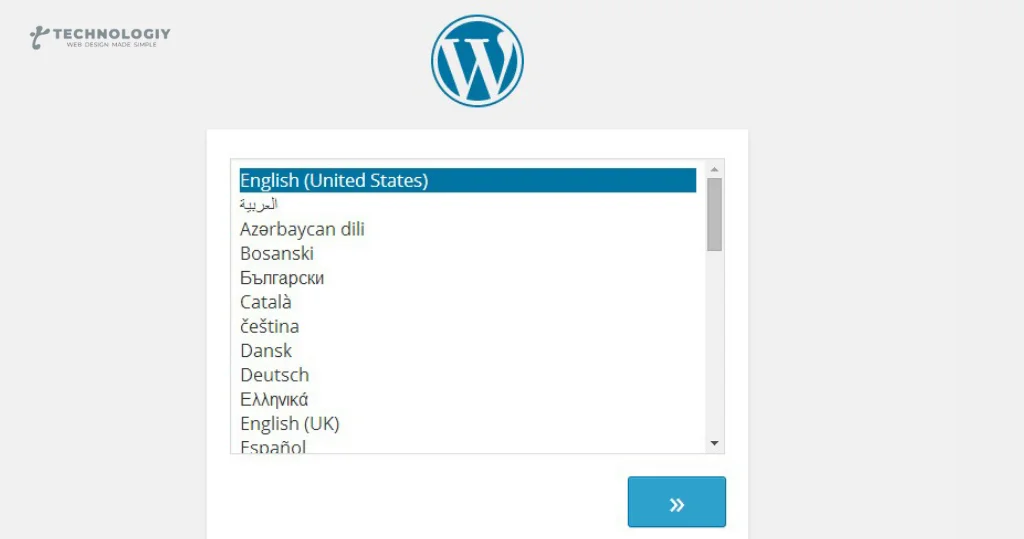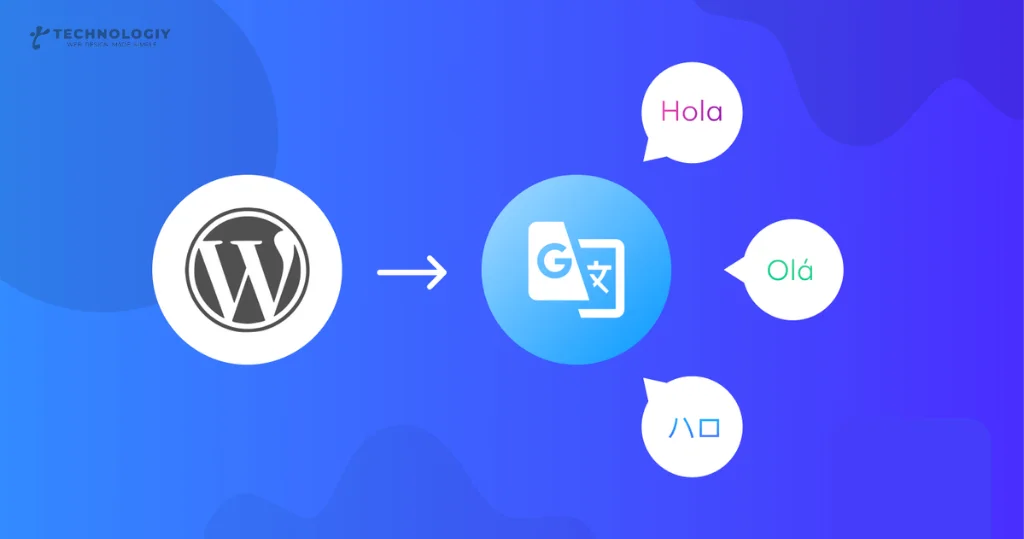Unlocking the Power of WordPress Language Packs: A Step-by-Step Guide Are you a WordPress website owner looking to reach a global audience? Do you want to ensure that your content is accessible to users who speak different languages? Look no further than WordPress Language Packs! In this step-by-step guide, we’ll show you how to unlock the power of WordPress Language Packs and make your website multilingual.
Before we dive in, let’s understand what WordPress Language Packs are. Simply put, Language Packs are translations of the WordPress core software, themes, and plugins. They allow you to easily switch the language of your website, making it more inclusive and user-friendly for people around the world.
Step 1: Install WordPress in Your Desired LanguageL:
The first step in unlocking the power of WordPress Language Packs is to install WordPress in your desired language. Head over to the WordPress.org website and download the version of WordPress that matches your preferred language. During the installation process, you’ll be prompted to choose your language. Select the language you want and complete the installation.
Step 2: Activate a Language Pack:
Once you have WordPress installed in your desired language, it’s time to activate a Language Pack for your theme and plugins. Go to the “Dashboard” of your WordPress website and navigate to the “Settings” tab. From there, click on “General” and scroll down until you see the “Site Language” option. Choose the language you want your website to be displayed in and click on “Save Changes”.
Step 3: Install Language Packs for Themes and Plugins:
With the Language Pack for your WordPress core software activated, it’s time to install Language Packs for your themes and plugins. Head over to the “Appearance” tab in your WordPress dashboard and click on “Themes”. Locate the theme you want to translate and click on “Add New”. From there, search for the desired language using the search bar and install the Language Pack for that theme.
To install Language Packs for plugins, go to the “Plugins” tab in your WordPress dashboard and click on “Add New”. Search for the plugin you want to translate and install the Language Pack for that plugin.
Step 4: Test and Customize:
Congratulations! You have successfully installed Language Packs for your WordPress website. Now it’s time to test and customize the translations. Visit your website and navigate through different pages to see how the translations are working. If you notice any inaccuracies or areas that need improvement, you can customize the translations by using translation plugins or editing the language files directly.
Step 5: Keep Your Language Packs Updated:
Language Packs are continuously updated to ensure accuracy and compatibility with the latest WordPress version. It’s important to regularly check for updates and keep your Language Packs up to date. This will ensure that your website remains accessible and user-friendly for visitors speaking different languages.
Unlock the Power of WordPress Language Packs Today:
By following this step-by-step guide, you can unlock the power of WordPress Language Packs and make your website accessible to a global audience. Embrace diversity and reach out to users who speak different languages. Expand your online presence and open up new opportunities for growth. Start translating your WordPress website today and connect with a wider audience like never before!
Remember, WordPress Language Packs are just a few clicks away. Don’t miss out on the chance to make your website multilingual and enhance the user experience for your global audience. Let your content shine in different languages, and watch your website thrive!
(Note: The target audience for this blog copy is adults, and the tone of voice used is friendly.)
Exploring the Top WordPress Language Packs and Their FeaturesIn today’s globalized world, having a website that can cater to an international audience is essential. And when it comes to building a multilingual website, WordPress is the go-to platform for millions of website owners. With its extensive collection of language packs, WordPress makes it incredibly easy to translate your website into different languages, ensuring that your content reaches a wider audience.

WordPress language packs are essentially translation files that enable you to convert your website’s interface, themes, and plugins into different languages. These packs come with a variety of features that make localization a breeze. In this blog post.
We will explore some of the top WordPress language packs and delve into their unique features.
Polyglots Team:
The Polyglots Team is a dedicated group of volunteers who work tirelessly to translate WordPress into various languages. They maintain an extensive library of language packs that are regularly updated to ensure accuracy and compatibility. With over 200 language packs available, the Polyglots Team offers a wide range of options to cater to your website’s specific needs.
WPML:
WPML (WordPress Multilingual) is a powerful plugin that allows you to create and manage multilingual websites with ease. It comes with its own set of language packs, enabling you to translate all aspects of your website, including posts, pages, widgets, and even custom post types. WPML also offers advanced features like language switching, SEO optimization for each language, and compatibility with popular WordPress themes and plugins.
Loco Translate:
Loco Translate is a user-friendly plugin that simplifies the translation process for WordPress users. It allows you to translate themes and plugins directly from your WordPress dashboard, without the need for any external tools. Loco Translate also provides a collaborative platform, enabling multiple users to work on translations simultaneously, making it ideal for teams working on multilingual websites.
Polylang:
Polylang is another popular plugin that offers a seamless multilingual experience for WordPress users. It allows you to create bilingual or multilingual websites with ease, offering full support for RTL languages. With Polylang, you can translate all aspects of your website, including posts, categories, tags, menus, and even custom post types. The plugin also provides language switchers, customizable URL structures, and SEO optimization for each language.
Weglot:
Weglot is a cloud-based translation solution that takes care of all your website’s translation needs. It automatically detects and translates your website’s content into multiple languages, saving you time and effort. Weglot supports over 100 languages and integrates seamlessly with WordPress, making it a convenient choice for website owners looking to go multilingual.
WordPress language packs are an invaluable resource for website owners who wish to reach a global audience. Whether you choose to rely on the Polyglots Team’s extensive library or opt for a powerful plugin like WPML, Loco Translate, Polylang, or Weglot, there are plenty of options available to suit your specific needs. So, don’t let language barriers restrict the reach of your website. Explore the top WordPress language packs today and unlock the true potential of your online presence.
Remember, in an increasingly interconnected world, speaking the language of your audience is the key to success. With WordPress language packs, you can confidently engage with a diverse range of visitors, appealing to their preferences and making them feel at home on your website. Start exploring the possibilities today and watch your website flourish in multiple languages.
Maximizing SEO Potential with WordPress Language Packs:
Tips and Best PracticesWhen it comes to optimizing your website for search engines, one of the key factors to consider is the language you use. Catering to a global audience means providing content in different languages. This is where WordPress Language Packs come into play. In this article, we will explore the tips and best practices to maximize your SEO potential with WordPress Language Packs.
WordPress Language Packs are a powerful tool that allows you to easily translate your website’s content into multiple languages. By doing so, you can reach a wider audience and increase your website’s visibility in search engine results.
Here are some tips to help you make the most out of WordPress Language Packs for SEO:
Choose Relevant Keywords:
Just like with any SEO strategy, keyword research is crucial. Identify the keywords or key phrases that your target audience is using to search for content related to your website. Incorporate these keywords into your translated content to improve its visibility in search engine results.
Use SEO-Optimized URLs:
When using WordPress Language Packs, make sure to create SEO-friendly URLs for each translated page or post. Include relevant keywords in the URL slug to make it easier for search engines to understand the content of your page.
Optimize Meta Tags:
Meta tags, such as meta titles and descriptions, play a vital role in SEO. Ensure that you optimize these elements for each translated page or post. Include relevant keywords in your meta tags to improve your website’s visibility in search engine results.
Localize Your Content:
Simply translating your content word-for-word may not be enough. Consider localizing your content by adapting it to the cultural nuances and preferences of your target audience.
Quality Translation:
It is important to ensure that the translated content is of high quality. Poorly translated content can negatively impact your website’s credibility and user experience. Consider hiring professional translators or using reliable translation tools to ensure accurate and fluent translations.
Implement hreflang Tags:
Hreflang tags are HTML attributes that help search engines understand the language and country targeting of your translated content. By implementing hreflang tags correctly, you can avoid any confusion and ensure that search engines display the correct language version of your content to the appropriate audience.
Monitor and Analyze Performance:
Regularly monitor and analyze the performance of your translated content. Use tools like Google Analytics to track the traffic and engagement metrics of each language version. This will help you identify areas for improvement and make data-driven decisions to optimize your SEO strategy further.
By following these tips and best practices, you can maximize the SEO potential of your website with WordPress Language Packs. Remember to continuously monitor and adapt your strategy based on the performance data to ensure long-term success.
In conclusion, WordPress Language Packs are a valuable tool for expanding your website’s reach and attracting a global audience. By implementing these tips and best practices, you can optimize your content for SEO and increase your website’s visibility in search engine results. Don’t miss out on the opportunity to tap into new markets and drive organic traffic to your website. Start leveraging the power of WordPress Language Packs today!
